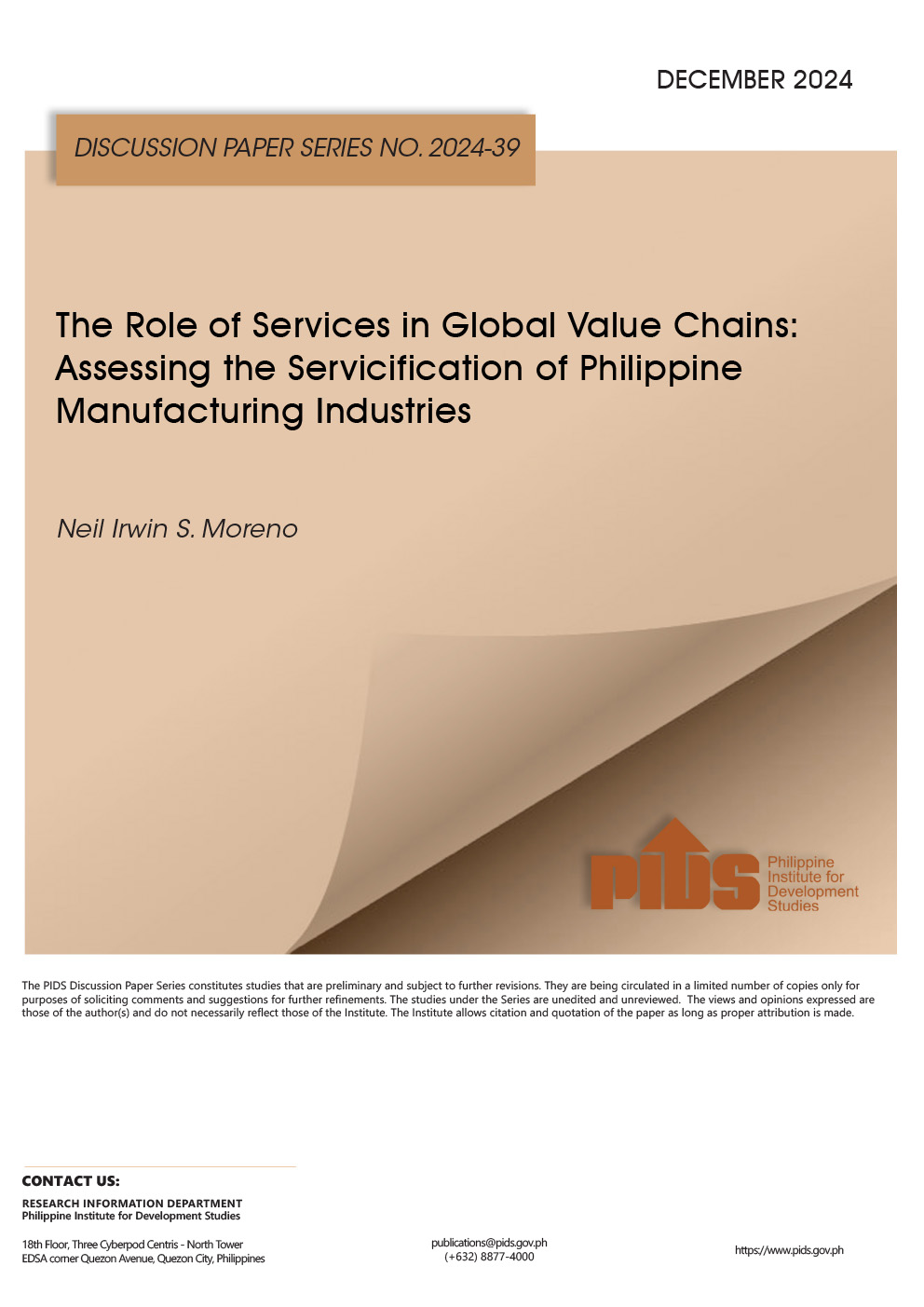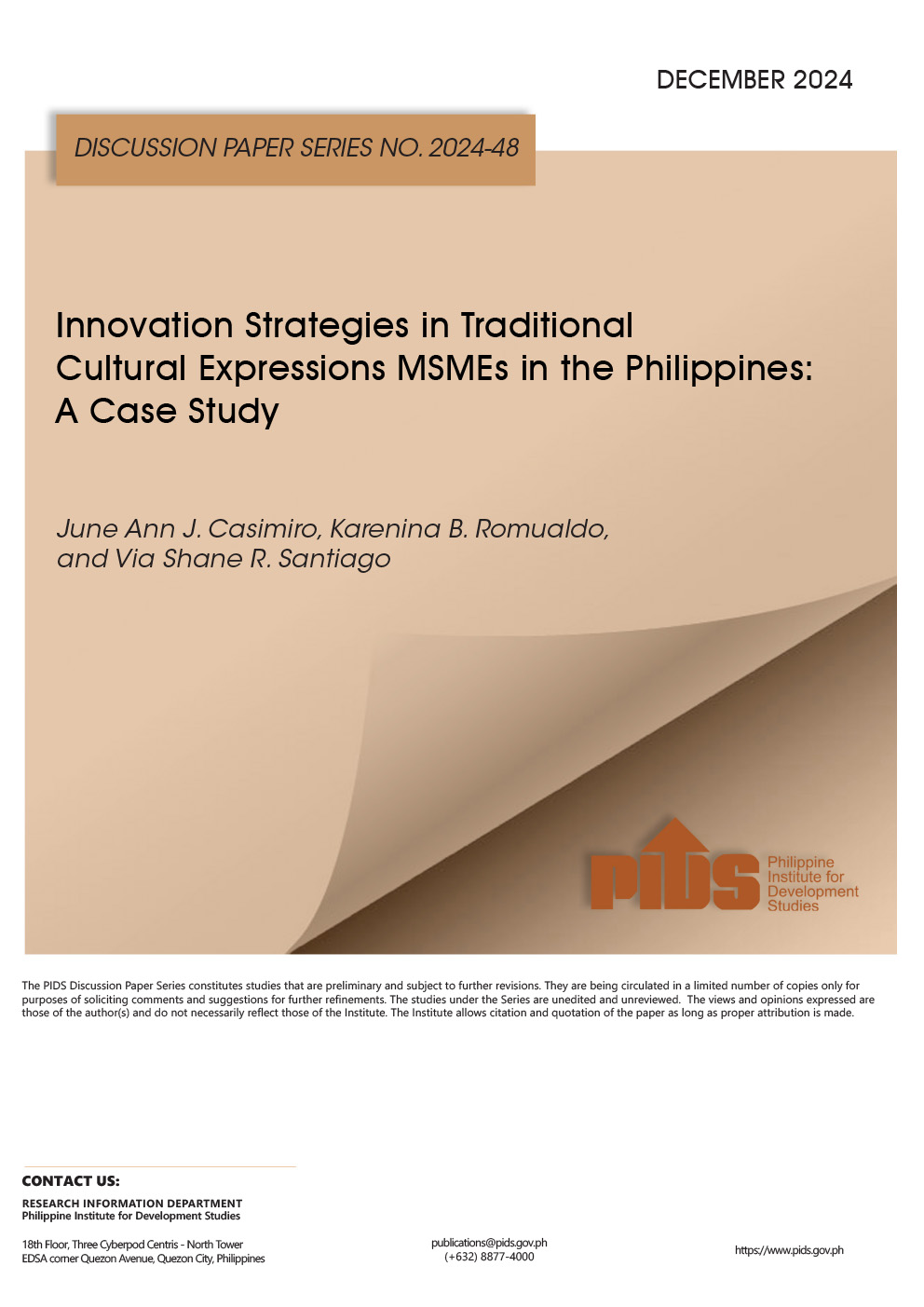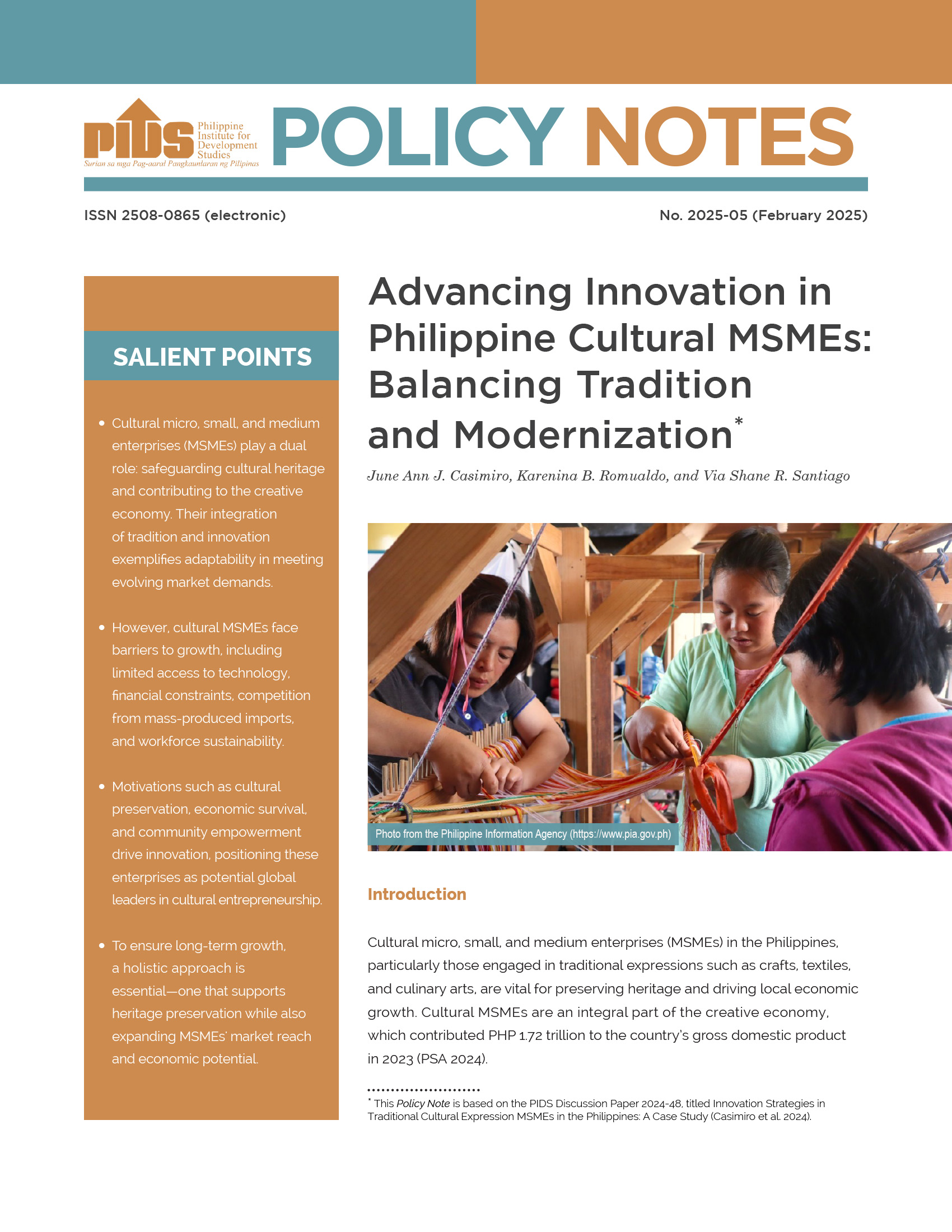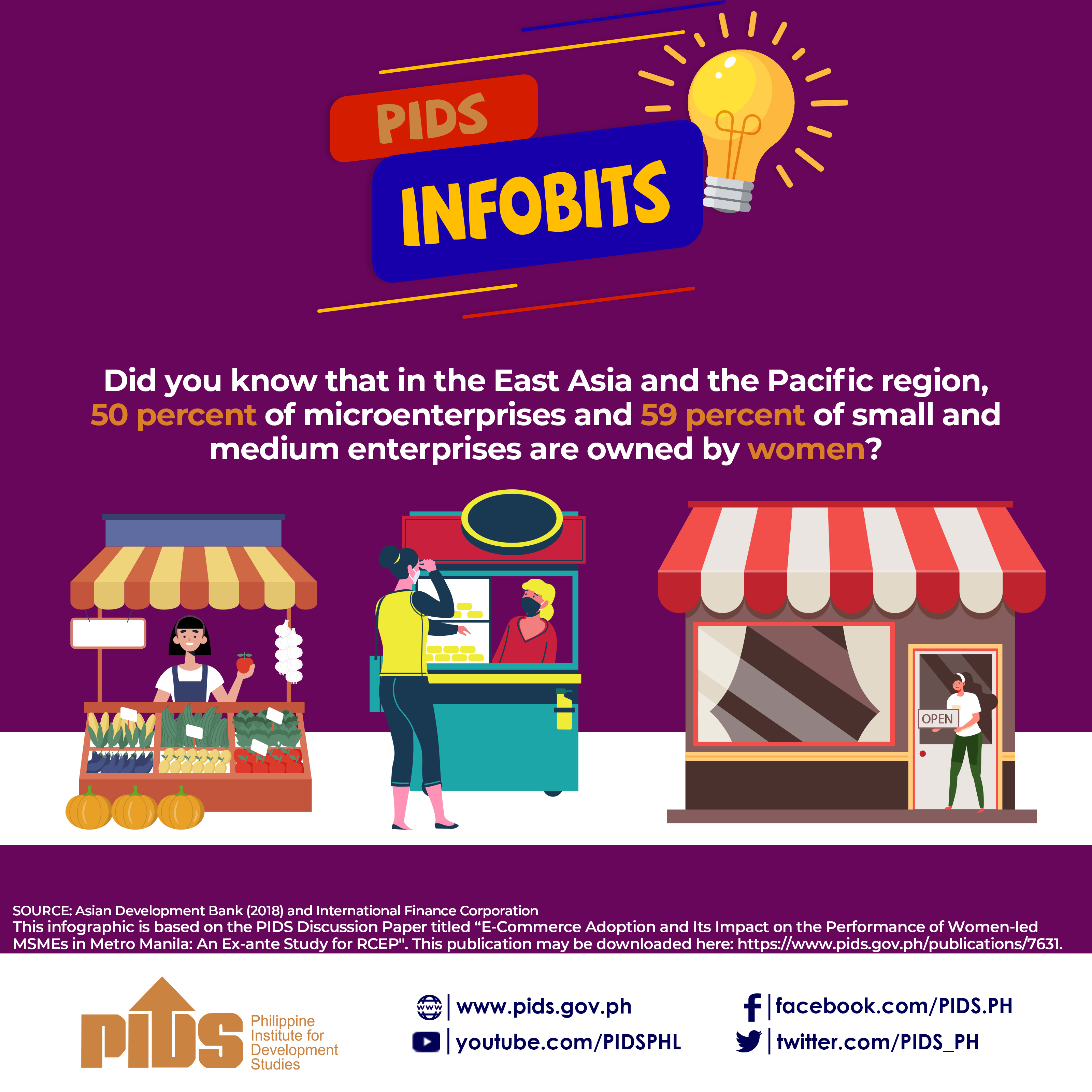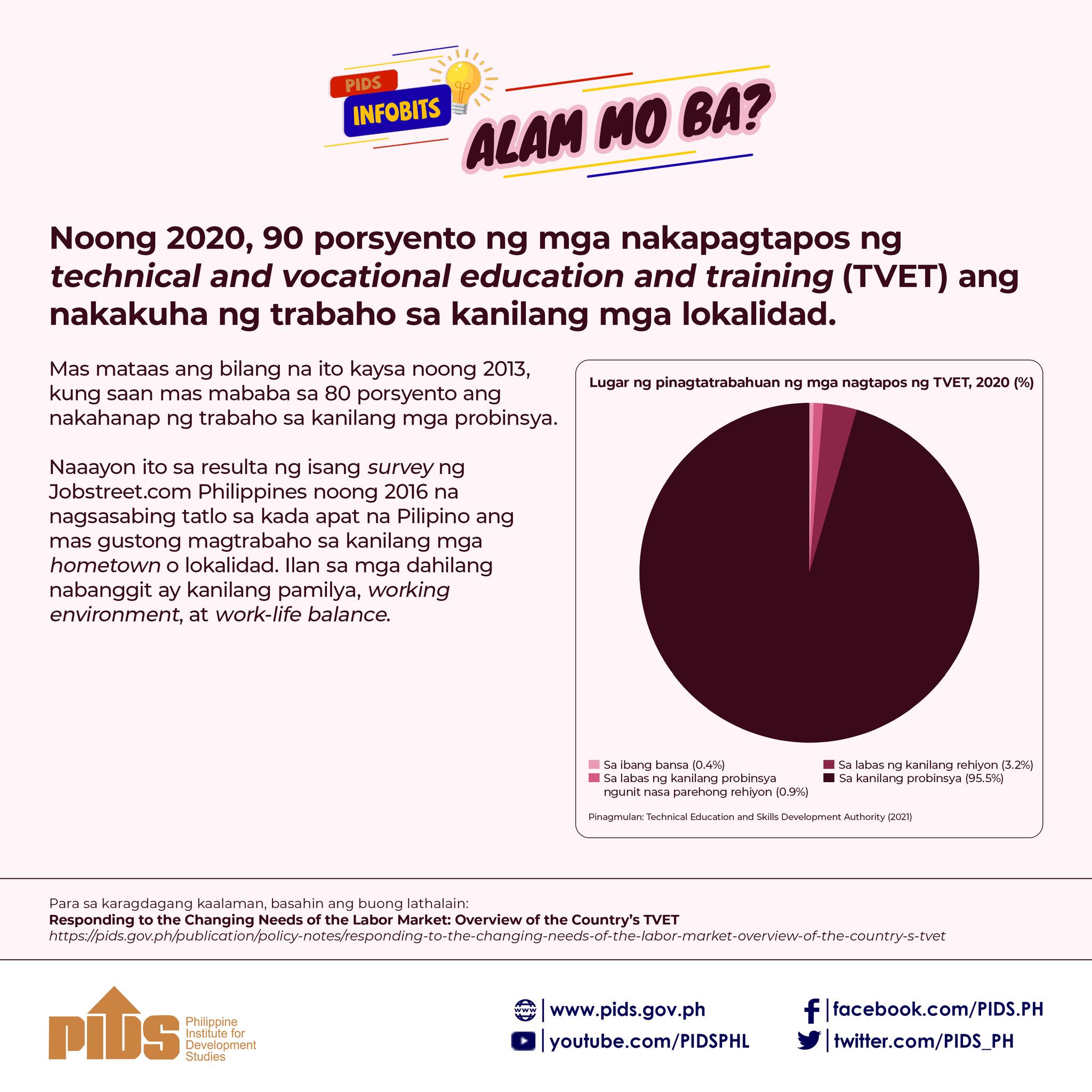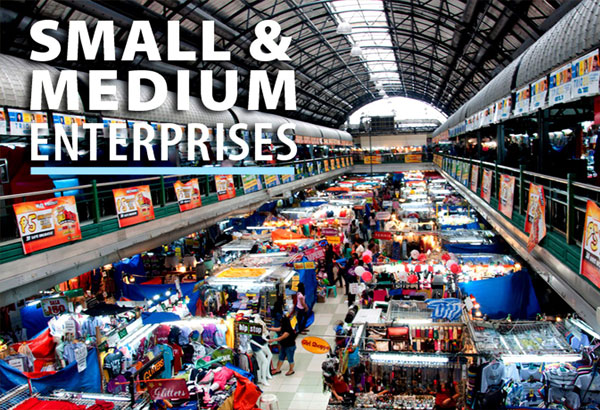
Small and medium enterprises (SMEs) in the Philippines need more support from government to help them scale up and internationalize their operations through global value chains (GVCs).
A study released by state think tank Philippine Institute for Development Studies (PIDS) noted that SMEs remain far less productive than large firms due to a number of challenges. These factors include access to finance, access to technology, access to markets, disruptive regulations, and lack of human capital.
Linking SMEs to GVCs, according to the study, can help boost SMEs’ productivity through improved market access, new technologies, and information. It also gives them access to skilled human resources and platform to develop economies of scale.
However, most SMEs find it difficult to participate in GVCs, said authors Jamil Paolo Francisco, Tristan Canare, and Jean Rebecca Labios of the Asian Institute of Management Rizalino S. Navarro Policy Center for Competitiveness.
Based on a survey conducted by the team, SMEs identified corruption and high tariff rates as main obstacles in penetrating the international market. Other challenges cited by SMEs include poor quality of infrastructure relevant to trade, unstable foreign currency exchange rate, and difficulty in meeting international products and services standards.
So how can government help promote SME participation in GVCs?
The authors pointed out the need to enhance ports and customs operations. They argued that inefficiencies in ports and customs processes unnecessarily increase the cost of trading. They suggested that simplifying these processes through automation can facilitate the exporting and importing activities of SMEs, and at the same time reduce the incentives for corruption.
They also stressed the need to improve the credit terms of SME loans as many of them are reluctant to invest and avail of take-out loans because of risk aversion.
“Better credit terms may be provided in an SME law. This need not be lower-than-market interest rates as this may cause the lender to lose money. It may be longer repayment terms or acceptance of high-value collateral that are usually not accepted,” they recommended.
Incentivizing the export of higher-value products can also help SMEs. According to the authors, this can be done through the provision of incentives on the purchase of equipment that processes raw materials into higher-value products. This could be in the form of tax breaks for purchase of equipment or for equipment financing.
The study also pointed out that aside from exporting, SMEs can also participate in GVCs through the provision of supplies or services to firms that are already connected to the value chain. One way to link SMEs with foreign or large firms is through an online platform where SMEs can post the services that they offer and their qualifications.
Other recommendations include reducing the cost of participating in trade fairs for SMEs, expanding entrepreneurial skills training for business owners, and devising programs that are targeted to the specific needs and challenges faced by firms.
Meanwhile, the authors also encouraged SMEs to shift to new market niches where competition is not yet too tough. They can also cut cost by not investing in equipment that they can only use once or for few purposes.
SMEs, especially those that do not have access to market information in export-destination countries, should try indirect exporting too, they suggested. In this kind of setup, the SME does not perform the actual exporting; instead, it sells to a third party which, in turn, exports the product or uses it as input for the product it exports.
Lastly, the study urged SMEs to take advantage of existing government support and network by participating in programs like the Negosyo Centers and theKapatid Mentor Me Program. ###
This press releases was based on the PIDS discussion paper titled “Obstacles and Enablers of Internationalization of Philippine SMEs Through Participation in Global Value Chains”.
A study released by state think tank Philippine Institute for Development Studies (PIDS) noted that SMEs remain far less productive than large firms due to a number of challenges. These factors include access to finance, access to technology, access to markets, disruptive regulations, and lack of human capital.
Linking SMEs to GVCs, according to the study, can help boost SMEs’ productivity through improved market access, new technologies, and information. It also gives them access to skilled human resources and platform to develop economies of scale.
However, most SMEs find it difficult to participate in GVCs, said authors Jamil Paolo Francisco, Tristan Canare, and Jean Rebecca Labios of the Asian Institute of Management Rizalino S. Navarro Policy Center for Competitiveness.
Based on a survey conducted by the team, SMEs identified corruption and high tariff rates as main obstacles in penetrating the international market. Other challenges cited by SMEs include poor quality of infrastructure relevant to trade, unstable foreign currency exchange rate, and difficulty in meeting international products and services standards.
So how can government help promote SME participation in GVCs?
The authors pointed out the need to enhance ports and customs operations. They argued that inefficiencies in ports and customs processes unnecessarily increase the cost of trading. They suggested that simplifying these processes through automation can facilitate the exporting and importing activities of SMEs, and at the same time reduce the incentives for corruption.
They also stressed the need to improve the credit terms of SME loans as many of them are reluctant to invest and avail of take-out loans because of risk aversion.
“Better credit terms may be provided in an SME law. This need not be lower-than-market interest rates as this may cause the lender to lose money. It may be longer repayment terms or acceptance of high-value collateral that are usually not accepted,” they recommended.
Incentivizing the export of higher-value products can also help SMEs. According to the authors, this can be done through the provision of incentives on the purchase of equipment that processes raw materials into higher-value products. This could be in the form of tax breaks for purchase of equipment or for equipment financing.
The study also pointed out that aside from exporting, SMEs can also participate in GVCs through the provision of supplies or services to firms that are already connected to the value chain. One way to link SMEs with foreign or large firms is through an online platform where SMEs can post the services that they offer and their qualifications.
Other recommendations include reducing the cost of participating in trade fairs for SMEs, expanding entrepreneurial skills training for business owners, and devising programs that are targeted to the specific needs and challenges faced by firms.
Meanwhile, the authors also encouraged SMEs to shift to new market niches where competition is not yet too tough. They can also cut cost by not investing in equipment that they can only use once or for few purposes.
SMEs, especially those that do not have access to market information in export-destination countries, should try indirect exporting too, they suggested. In this kind of setup, the SME does not perform the actual exporting; instead, it sells to a third party which, in turn, exports the product or uses it as input for the product it exports.
Lastly, the study urged SMEs to take advantage of existing government support and network by participating in programs like the Negosyo Centers and theKapatid Mentor Me Program. ###
This press releases was based on the PIDS discussion paper titled “Obstacles and Enablers of Internationalization of Philippine SMEs Through Participation in Global Value Chains”.

